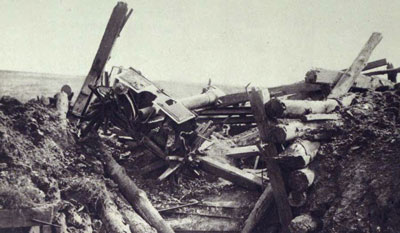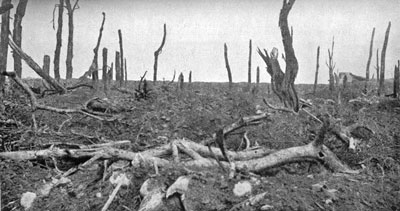
WWII: Maginot Line | Normandy | V-Weapon Sites | Arnhem
Further afield: Crete
| Home Tracing Military Ancestors Travel Advice CWGC Cemeteries Iron Harvest News Book Reviews Glossary Links Contact Me The Somme:
 
|
The Australians at PozièresWith the German second line breached in the south, attention now turned to Pozières village. Astride the Albert-Bapaume road at the highest point of the ridge, possession of this feature would give the British unparalleled views over German positions to the north and east and its capture would outflank the Thiepval defences that had wrought such havoc on the first day. British divisions had in fact been inching their way towards Pozières since 1st July, with La Boisselle, Ovillers and Contalmaison all falling after bitter fighting. The task of clearing the village itself fell to the Australian 1st Division of General Gough's Reserve Army, newly arrived on the Somme battlefield. In the days preceding the attack the British and Australian Corps artillery raked the village until only ruins were left. Then in the early hours of 23rd July, after another shattering bombardment from the British artillery, the Australians swept forward supported by the British 48th (South Midland) Division on their left. In the dark and pummelled by the torrent of shells, most defenders put up little fight and the village was reached and consolidated fairly quickly.
However, the battle for Pozières was far from over. The threat to the central part of their defences, focused wave after wave of German counters-attacks and a storm of defensive artillery fire descended on the Australians. The British artillery responded and the rain of steel reached a crescendo on 26th July by which time the 1st Australian Division had suffered over 5,000 casualties. They were relieved by the 2nd Australian Division, which was rushed into an ill co-ordinated attack by General Gough against the German positions to the east of the village known as the "Old German" or "OG" lines. With preparation time short and devastating German defensive fire continuing, it was almost impossible to organise an effective bombardment and wire in front of the OG lines was largely uncut. The subsequent attack on the morning of 29th July was disastrous, with machine-guns sweeping the assaulting troops who took over 3,500 casualties. After this reverse the Australians took time to dig approach trenches and a subsequent attack on 4th August at last carried the OG lines. But it was a success that the Germans could not allow to stand – the capture of the OG lines gave the British commanding views deep behind the German lines all the way to Bapaume. In the early morning of 7th August, after almost two days of defensive bombardments against the Australian defenders, the Germans counter-attacked, breaking through and advancing almost into Pozières village itself before they were stopped. With the village now secure the fulcrum of the battle moved northwards to Mouquet Farm, a German position which protected the rear of the Thiepval defensive system. On the ridgetop exposed to German artillery, it was the scene of one of the terrible slugfests of the whole campaign as a seesaw battle of artillery bombardment and attack followed by defensive artillery and counter-attack reduced the area to an unrecognisable morass. The battle for the farm wore on into September with Canadian and British units also becoming involved. The position was not finally cleared until the 27th of that month.
|

